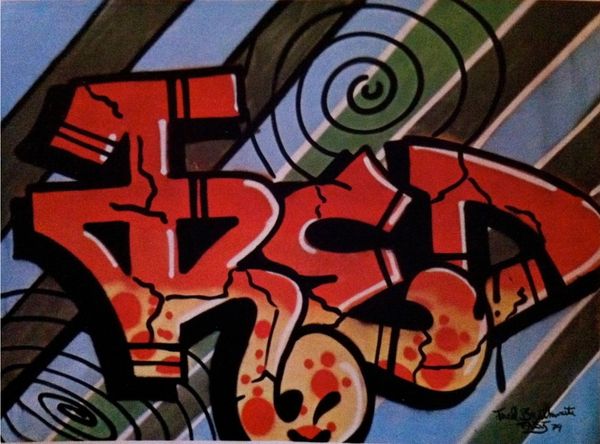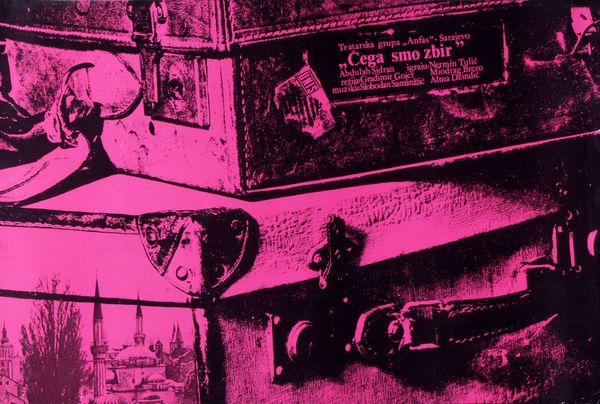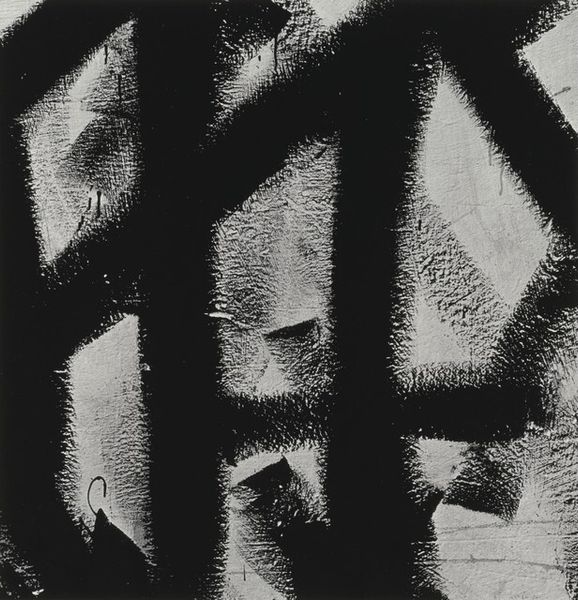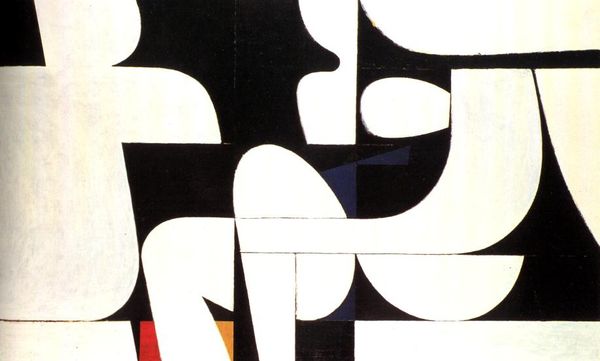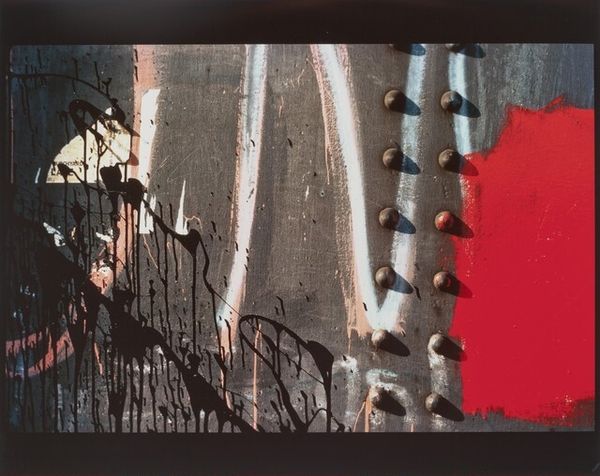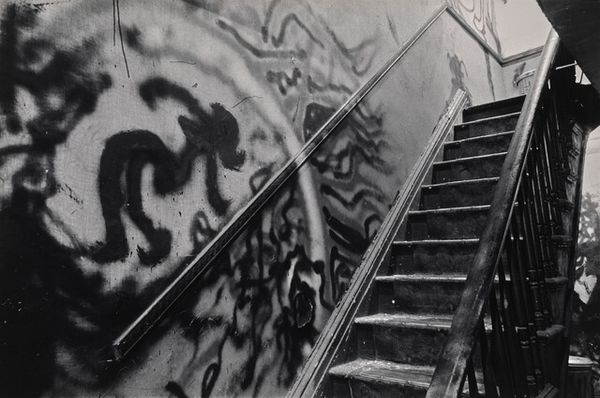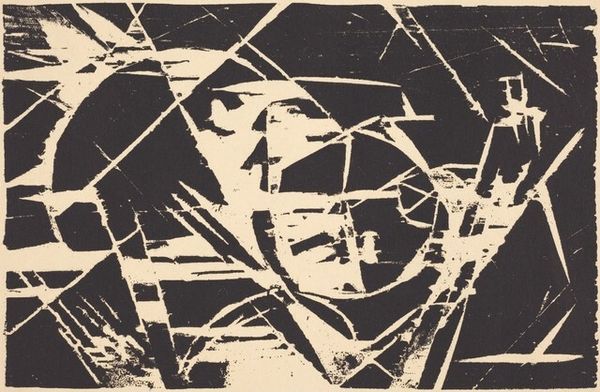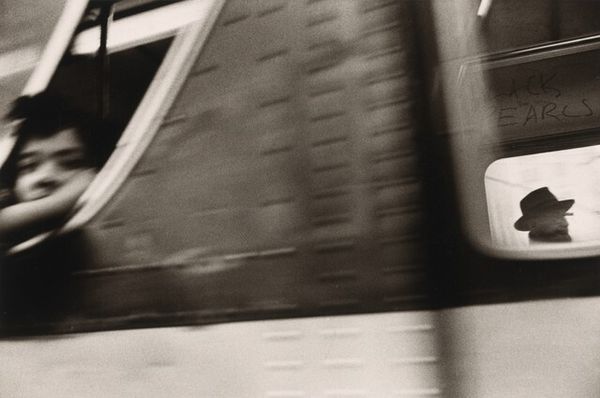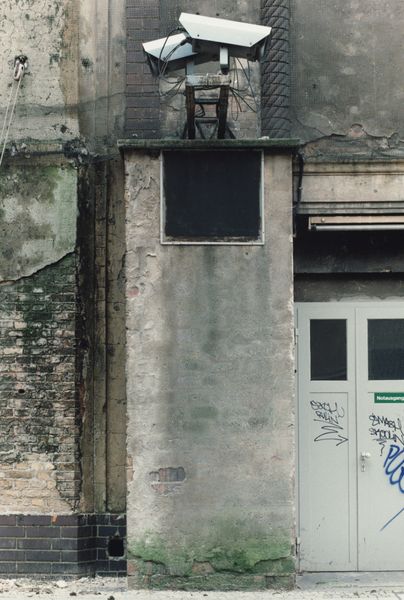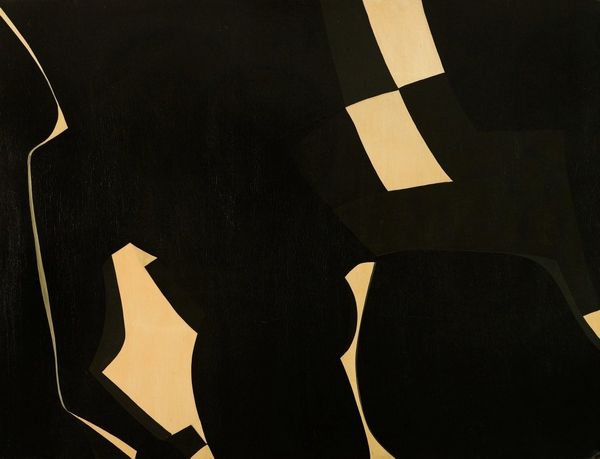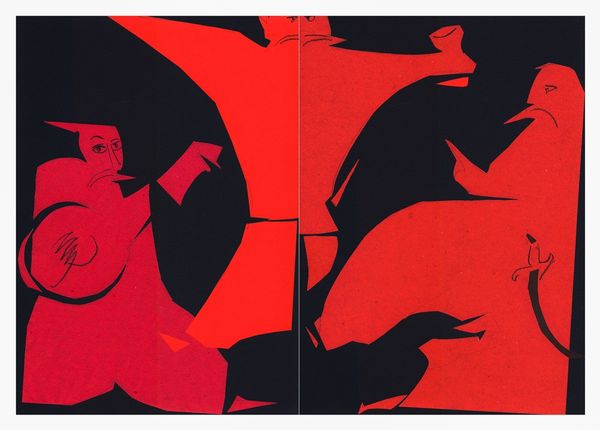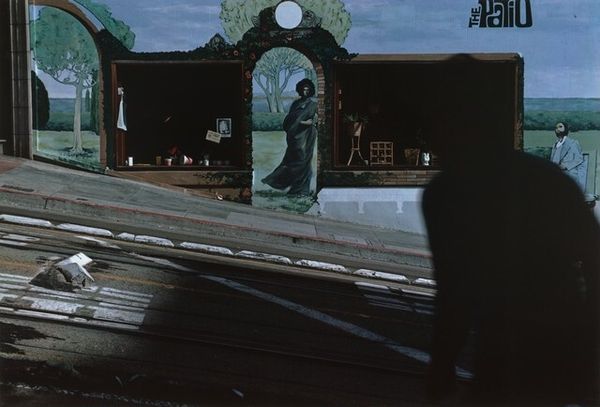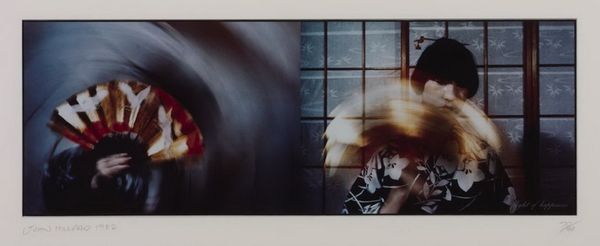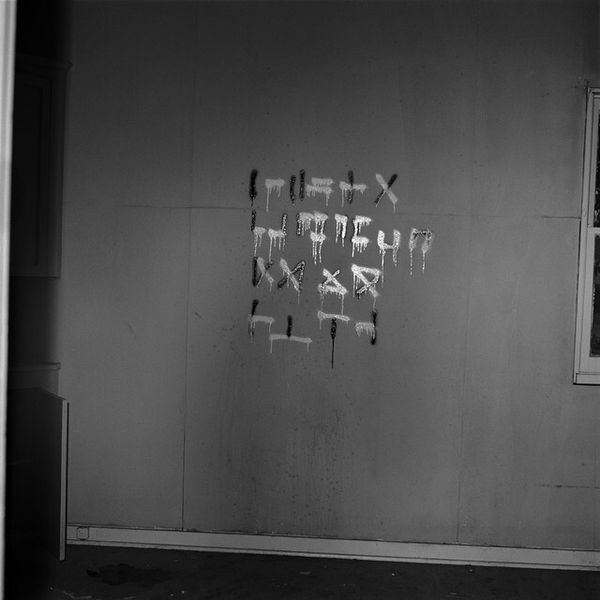
#
neo-pop
Copyright: Keith Haring,Fair Use
Editor: Here we have an Untitled work from 1982 by Keith Haring, looks like a drawing done with graphite. It's got a really immediate feel, kind of raw with this bold, white figure against the dark background, almost like graffiti on a chalkboard. What do you see in this piece, considering its historical context? Curator: Haring's subway drawings were powerful interventions. The black background is literally a vacant advertising panel in a subway station. Consider the social climate of 1982 New York: rampant inequality, the burgeoning AIDS crisis, a city on the edge. These weren’t just whimsical doodles; they were acts of defiance, claiming public space, injecting life and commentary into a system that often ignored or oppressed marginalized communities. How does that make you rethink its "raw" feeling? Editor: I see what you mean. The rawness becomes intentional, not just stylistic. The figure's pose now seems more energetic, even rebellious, like it’s dancing outside the lines – literally and figuratively! What do you mean about claiming public space? Curator: Exactly. Think about who gets to speak, whose voices are amplified in a city. Haring bypassed traditional art world gatekeepers, taking his message directly to the people on the streets and subways. He created art for everyone, not just the elite, challenging established hierarchies of value. Do you think it changed who gets to be considered the audience or creator of art? Editor: Absolutely, it democratized the process! He was making art accessible, engaging directly with the public in a way galleries never could. His art feels more inclusive and relatable, not stuck up or bougie. Curator: I agree. And, in doing so, it broadened what art can be and who it’s for, making room for other artists working outside conventional structures, particularly those from marginalized groups. It’s not just a drawing; it's a statement of intent. Editor: Wow, I never considered it in that light. It’s amazing how understanding the context can completely change how you see a piece. Curator: Indeed. By looking beyond the surface and exploring the social and political landscape in which it emerged, the artwork reveals itself to be a vital expression of its time, inviting us to engage in crucial conversations.
Comments
No comments
Be the first to comment and join the conversation on the ultimate creative platform.
